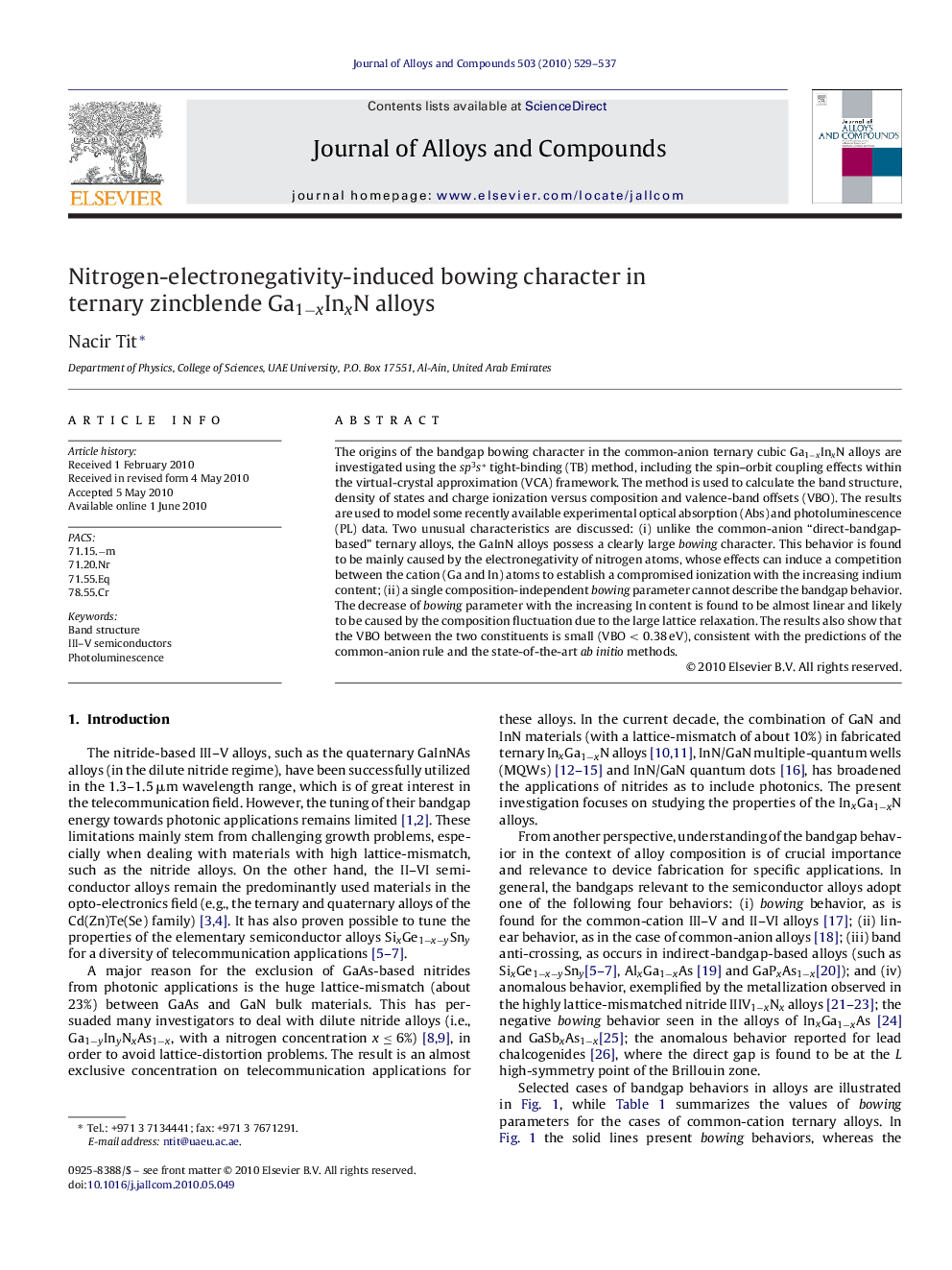| Article ID | Journal | Published Year | Pages | File Type |
|---|---|---|---|---|
| 1620320 | Journal of Alloys and Compounds | 2010 | 9 Pages |
Abstract
The origins of the bandgap bowing character in the common-anion ternary cubic Ga1âxInxN alloys are investigated using the sp3sâ tight-binding (TB) method, including the spin-orbit coupling effects within the virtual-crystal approximation (VCA) framework. The method is used to calculate the band structure, density of states and charge ionization versus composition and valence-band offsets (VBO). The results are used to model some recently available experimental optical absorption (Abs) and photoluminescence (PL) data. Two unusual characteristics are discussed: (i) unlike the common-anion “direct-bandgap-based” ternary alloys, the GaInN alloys possess a clearly large bowing character. This behavior is found to be mainly caused by the electronegativity of nitrogen atoms, whose effects can induce a competition between the cation (Ga and In) atoms to establish a compromised ionization with the increasing indium content; (ii) a single composition-independent bowing parameter cannot describe the bandgap behavior. The decrease of bowing parameter with the increasing In content is found to be almost linear and likely to be caused by the composition fluctuation due to the large lattice relaxation. The results also show that the VBO between the two constituents is small (VBO<0.38Â eV), consistent with the predictions of the common-anion rule and the state-of-the-art ab initio methods.
Related Topics
Physical Sciences and Engineering
Materials Science
Metals and Alloys
Authors
Nacir Tit,
